Abstract
Leaflets of Vicia faba L. were pulse labeled with 14CO2 and the kinetics of 14C-sucrose redistribution among individual tissues was followed. Sucrose specific activity in the whole leaf peaked about 15 minutes after labeling and declined with a half-time of about 80 minutes. In one experiment, leaflet discs taken at various times during the 12CO2 chase were quick frozen, freeze-substituted, and embedded in plastic. The tissue was sectioned paradermally and sections of palisade parenchyma, of spongy parenchyma, and of spongy parenchyma that contained veins were collected. Water extracts from these sections were assayed for sucrose specific activity. Sucrose specific activity in the palisade parenchyma was higher than that of the spongy parenchyma and reached a maximum in both tissues 9 to 15 minutes after labeling. Sucrose specific activity initially declined rapidly in the palisade parenchyma followed by a period during which little or no loss occurred. Sucrose specific activity in sections containing veins peaked at 15 minutes with a maximum value substantially higher than either mesophyll tissue, indicating that recently synthesized sucrose was preferentially exported from the mesophyll. Decline of activity in these sections containing veins continued for the remainder of the experiment. Sucrose specific activity in lower epidermal peels peaked several minutes after that of the whole leaflet and remained lower. Sucrose specific activity in upper epidermal peels was variable (probably due to contamination), but the limited data suggest that the sucrose specific activity there reached somewhat higher values than those of the lower epidermis. The experiments indicate that each leaf tissue contains a kinetically identifiable sucrose pool (which we refer to as “histological compartmentation”), and that further compartmentation may occur at the intracellular level. A simulation of leaf sucrose compartmentation is presented.
Full text
PDF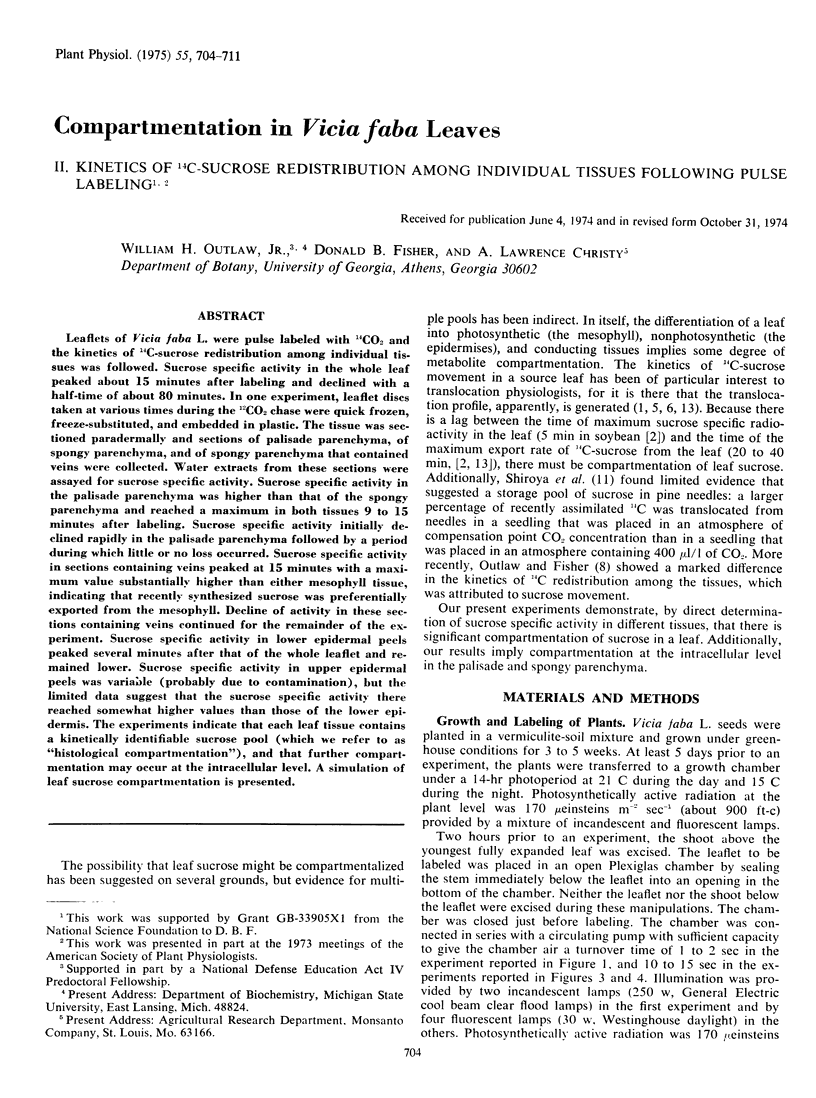
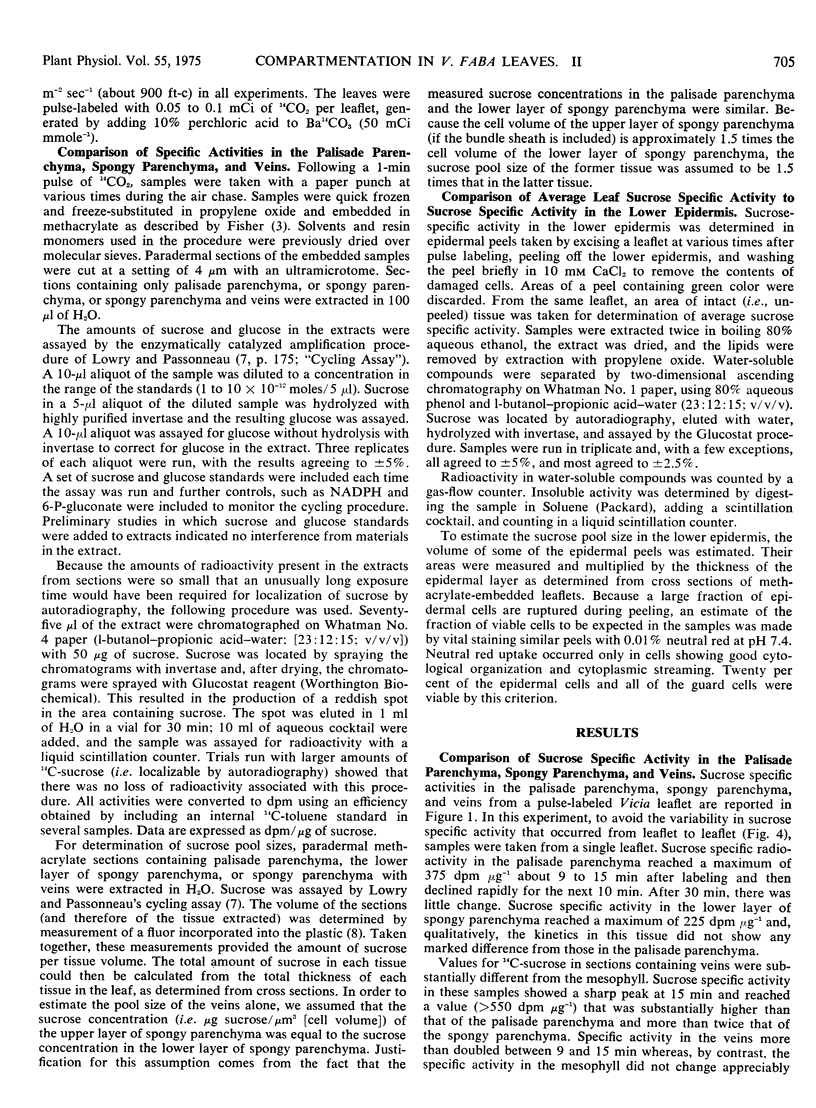
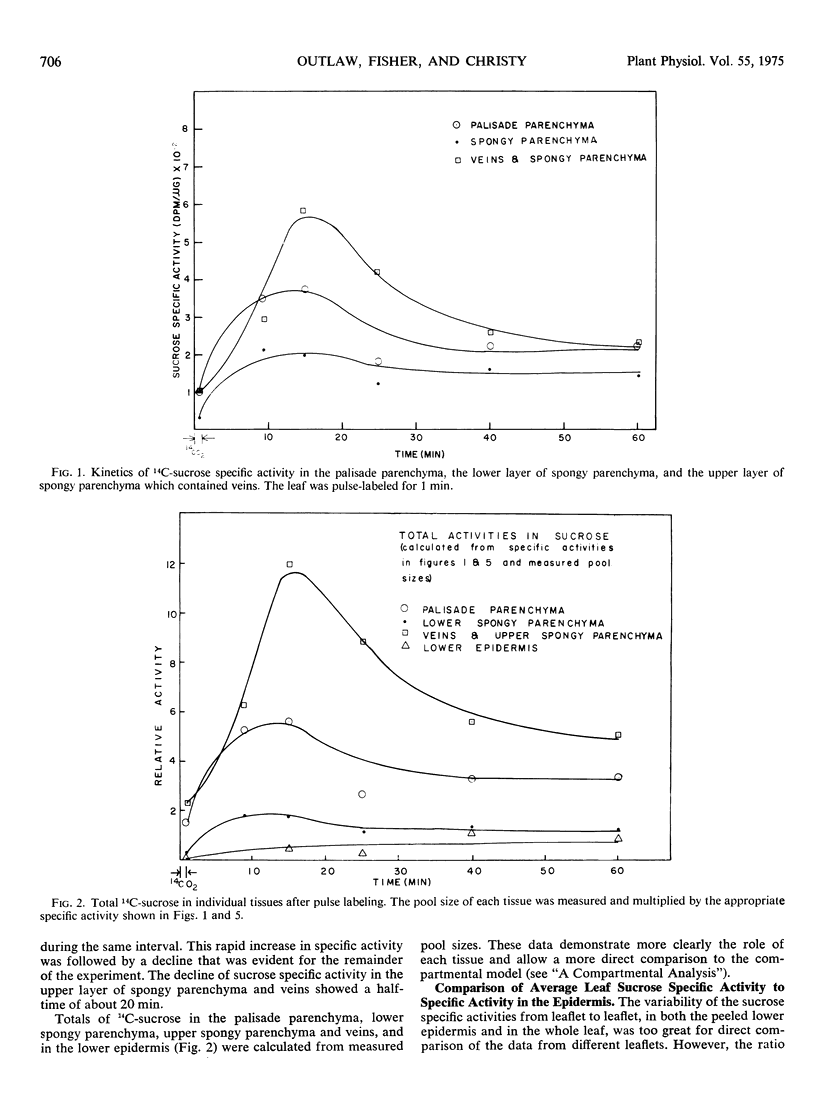
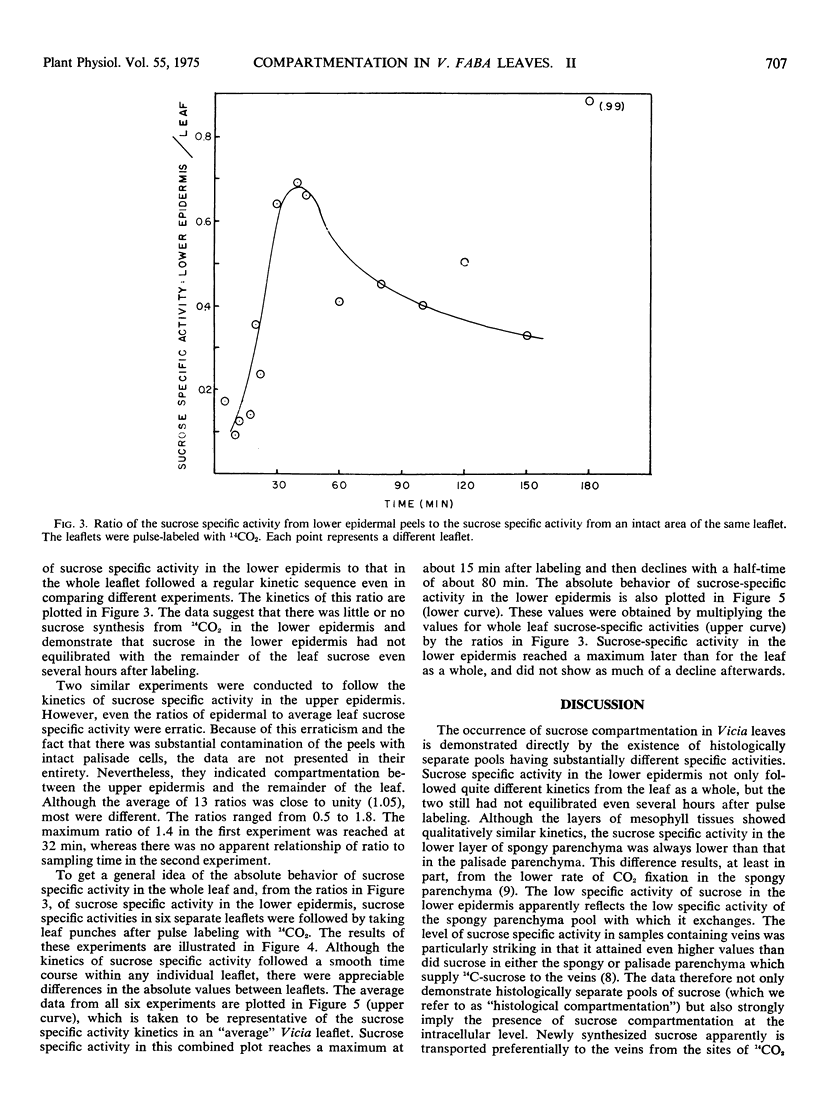
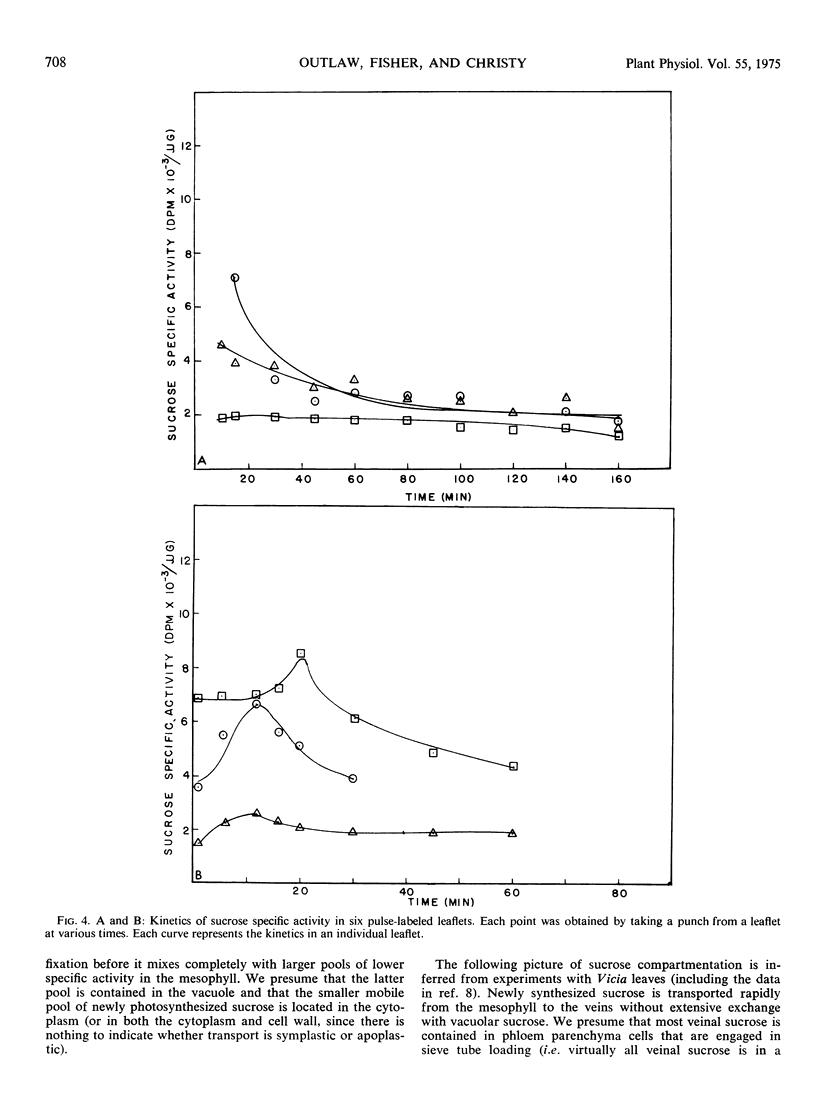
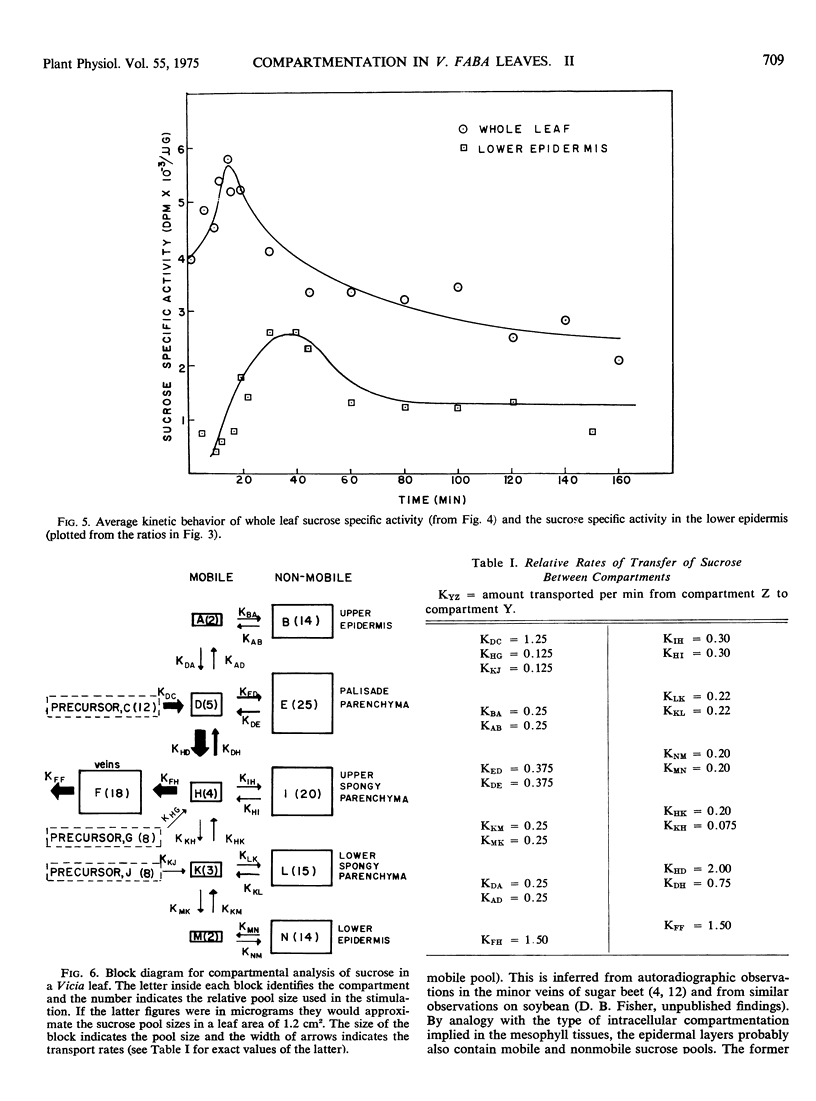
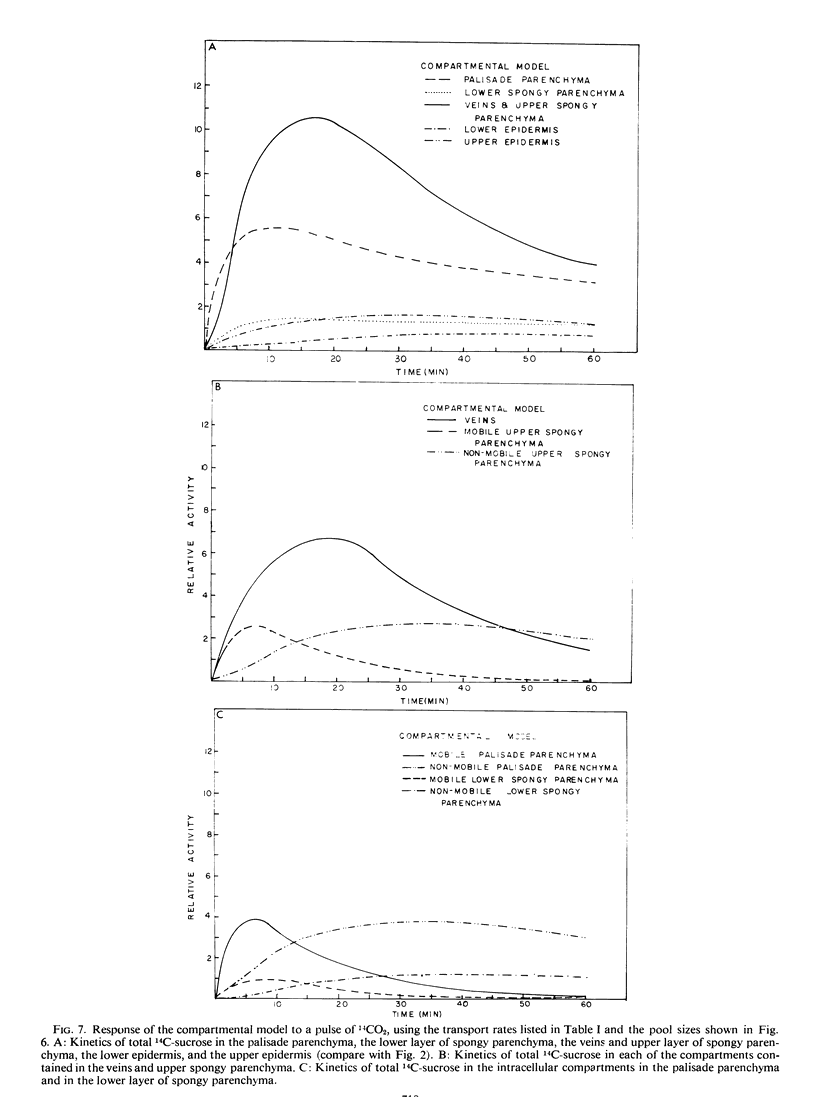
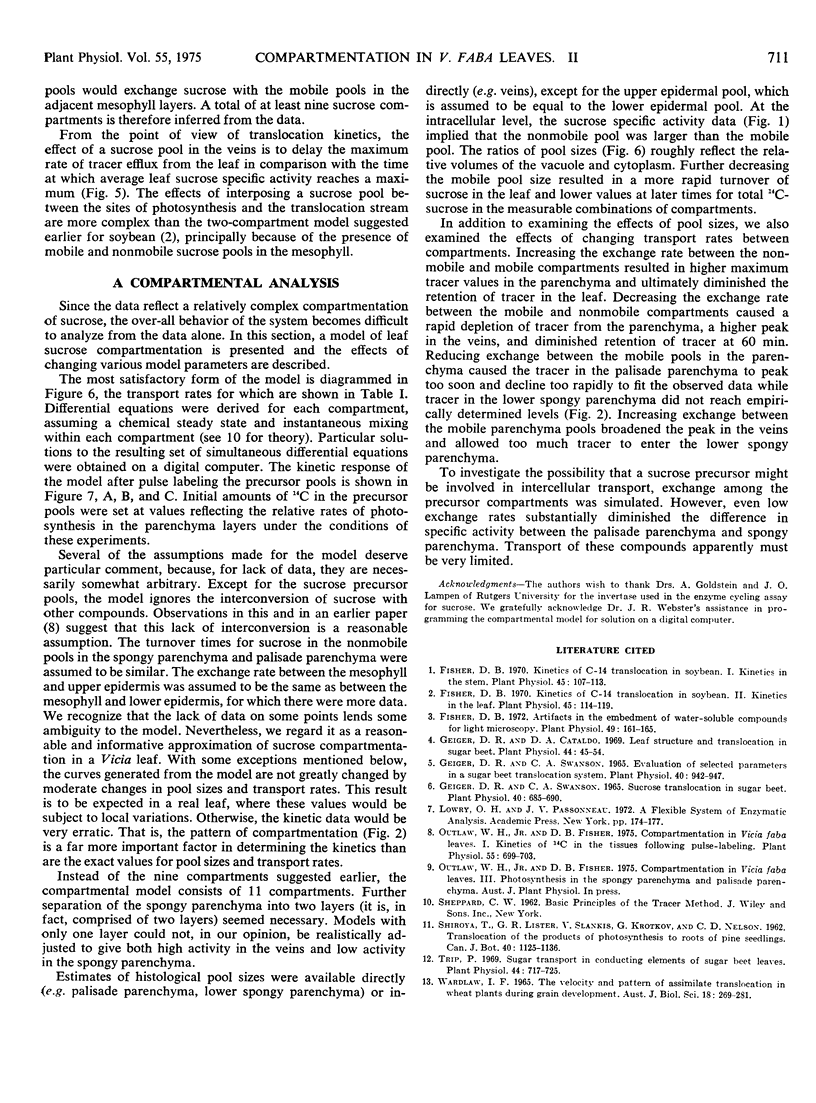
Selected References
These references are in PubMed. This may not be the complete list of references from this article.
- Fisher D. B. Artifacts in the Embedment of Water-soluble Compounds for Light Microscopy. Plant Physiol. 1972 Feb;49(2):161–165. doi: 10.1104/pp.49.2.161. [DOI] [PMC free article] [PubMed] [Google Scholar]
- Fisher D. B. Kinetics of C-14 Translocation in Soybean: II. Kinetics in the Leaf. Plant Physiol. 1970 Feb;45(2):114–118. doi: 10.1104/pp.45.2.114. [DOI] [PMC free article] [PubMed] [Google Scholar]
- Fisher D. B. Kinetics of C-14 translocation in soybean: I. Kinetics in the stem. Plant Physiol. 1970 Feb;45(2):107–113. doi: 10.1104/pp.45.2.107. [DOI] [PMC free article] [PubMed] [Google Scholar]
- Geiger D. R., Cataldo D. A. Leaf structure and translocation in sugar beet. Plant Physiol. 1969 Jan;44(1):45–54. doi: 10.1104/pp.44.1.45. [DOI] [PMC free article] [PubMed] [Google Scholar]
- Geiger D. R., Swanson C. A. Evaluation of Selected Parameters in a Sugar Beet Translocation System. Plant Physiol. 1965 Sep;40(5):942–947. doi: 10.1104/pp.40.5.942. [DOI] [PMC free article] [PubMed] [Google Scholar]
- Geiger D. R., Swanson C. A. Sucrose Translocation in the Sugar Beet. Plant Physiol. 1965 Jul;40(4):685–690. doi: 10.1104/pp.40.4.685. [DOI] [PMC free article] [PubMed] [Google Scholar]
- Outlaw W. H., Fisher D. B. Compartmentation in Vicia faba Leaves: I. Kinetics of C in the Tissues following Pulse Labeling. Plant Physiol. 1975 Apr;55(4):699–703. doi: 10.1104/pp.55.4.699. [DOI] [PMC free article] [PubMed] [Google Scholar]
- Trip P. Sugar transport in conducting elements of sugar beet leaves. Plant Physiol. 1969 May;44(5):717–725. doi: 10.1104/pp.44.5.717. [DOI] [PMC free article] [PubMed] [Google Scholar]


